Last-Minute NYC Holiday Gift Guide 🎁
We’ve created a holiday gift guide with presents for the intrepid New Yorker that should arrive just in time—


To me, the success of a museum in the digital age should be measured not by the value or prestige of its collection, nor the size of its endowment, but by the reaction of the children who visit–those that may be the future patrons and cultural ambassadors for the arts. I spent last Saturday at the Museum of Arts and Design (or MAD Museum for short) at Columbus Circle, and I was equally taken by the art as I was with the reaction of the kids visiting–in a modern art museum no less. A trio of ten or eleven year-olds excitedly exclaimed in the Swept Away exhibit that it was the “coolest thing” they’d ever seen.
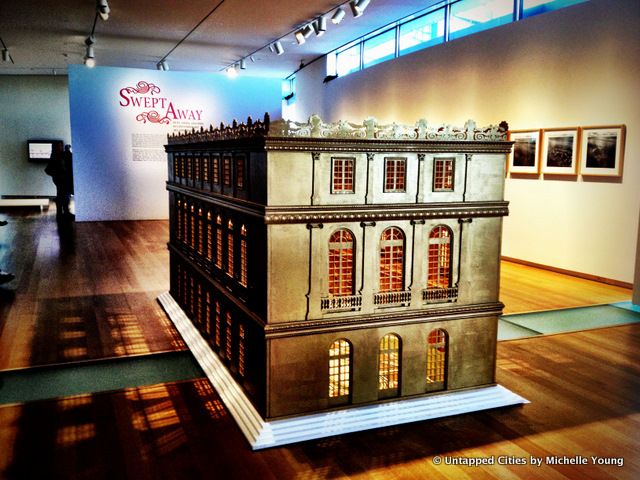 The Palace of Versailles by Lee Stoetzel, with the French gardens inside painted in sand
The Palace of Versailles by Lee Stoetzel, with the French gardens inside painted in sand
And as proven by one precocious seven year old, a child’s understanding of the conceptual motives behind modern art should not be overlooked or dismissed. She picked up on a key theoretical distinction in “Dinner for Two in One Month of Smog” by Kim Abeles (pictured below) that the very knowledgable tour guide didn’t seem to expect or understand in the girl’s comments.
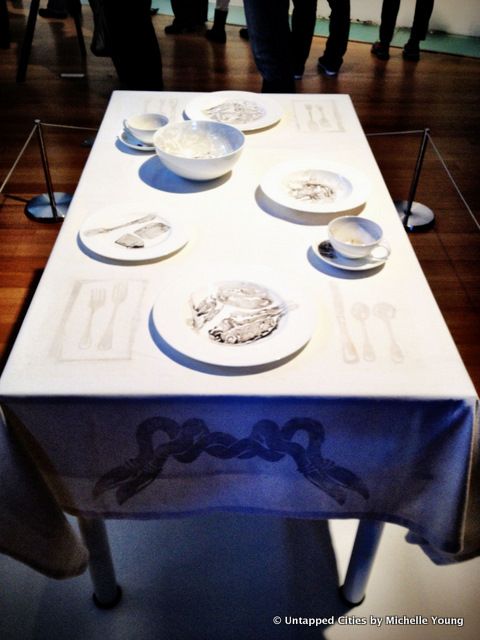 Kim Abeles, Dinner for Two in One Month of Smog
Kim Abeles, Dinner for Two in One Month of Smog
In this work, Abeles left stencils atop a dinner table setting on the roof of her Los Angeles studio for a month, leaving behind an environmentally-charged, yet beautiful statement on what she describes as “literal and metaphorical depictions of the current conditions of our life source, the air we breathe. They are reminders of our industrial decisions, the road we took that once seemed so modern.” The young girl raised her hand during the tour to point out the difference between the art on the porcelain, which were created by the smog onto physical objects, and the utensils which were made entirely from the remnants of the pollution. This grasp of object and void in such a young mind should have been encouraged and developed, but perhaps that was not the purpose of the tour, which was still informative and dynamic.
For a museum that New York Times architecture critic Nicolai Ouroussoff once derided as “a victory only for people who favor the safe and inoffensive,” the current set of exhibitions should dispel any criticism of the curation at least. The exhibits rival some of the best I’ve seen at the Centre Pompidou (the Dreamlands exhibit in 2010 comes to mind).
The exhibit Swept Away: Dust, Ashes, and Dirt in Contemporary Art Design is the continuation of MAD’s exploration of unusual materials in art. The museum’s previous exhibits in a similar vein include Otherworldly: Optical Delusions and Small Realities and Dead or Alive: Nature Becomes Art. Swept Away highlights “works that deal with issues such as the ephemeral nature of art and life, the quality and content of memory, issues of loss and disintegration, and the detritus of human existence.” [from MAD website]. The materials range from dust collected over months from the MAD museum floor, burned books, soil collected from New York’s five boroughs and ashes in various forms.
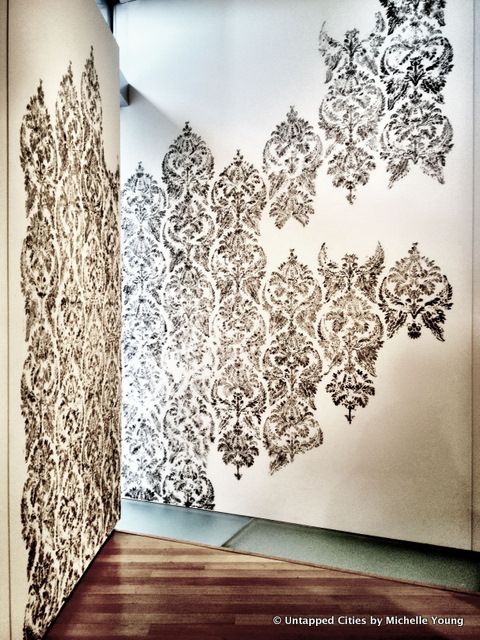 Catherine Bertola stenciled dust from the museum floor into a wallpaper-like design
Catherine Bertola stenciled dust from the museum floor into a wallpaper-like design
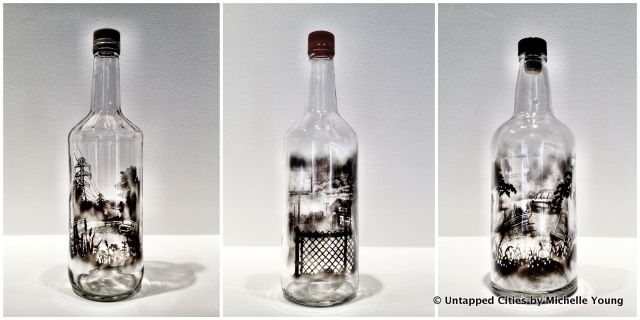
Jim Dingilian coats the inside of empty liquor bottles with smoke, then uses brushes and other small elements to paint these ambiguous yet commonplace suburban scenes
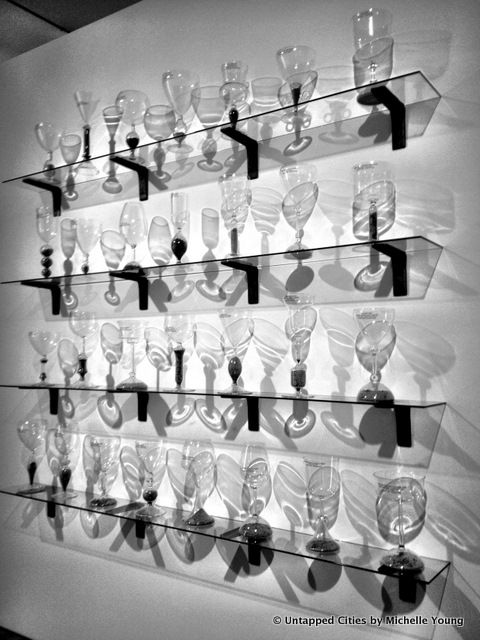 This trippy installation by Antonio Riello is actually a collection of burned books stored in blown glass–all books that had personal significance to the artist
This trippy installation by Antonio Riello is actually a collection of burned books stored in blown glass–all books that had personal significance to the artist
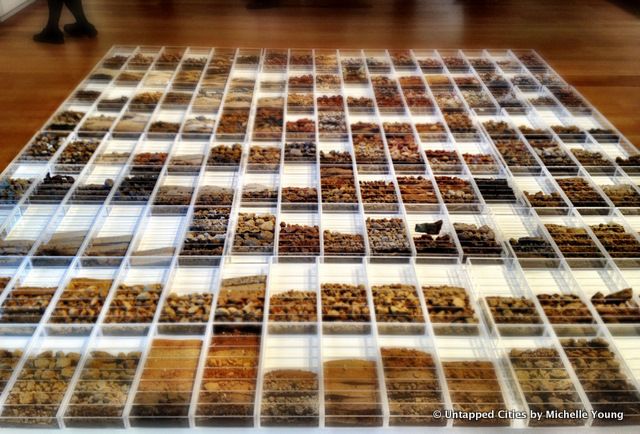
This work by Margaret Boozer uses soil samples collected from the five boroughs of NYC over the span of 15 years by the New York City Reconnaissance Soil Survey. It highlights the importance of soil in today’s rapid pace of urban development, which forms at a rate of only 1 inch every 500 years.
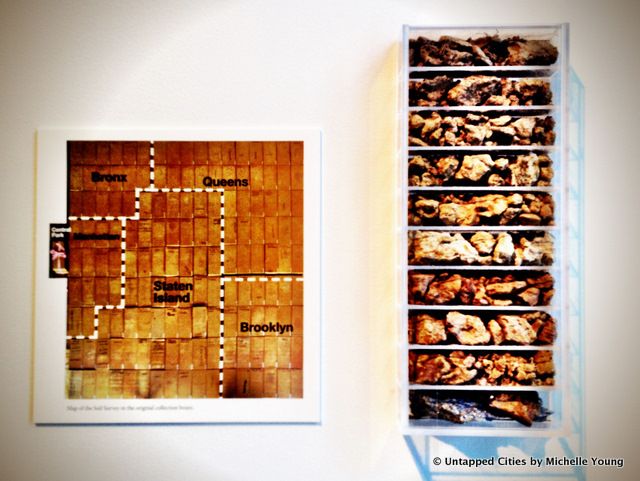 New York City has a wide range of soil types, a green rocky serpentine soil unique to Staten Island, a sandy soil in Brooklyn and Staten Island as a result of dredging, ash from the deposition of coal burning furnaces a hundred years ago. The soil sample Central Park (shown above) has ten distinct horizons from topsoil to schist bedrock.
New York City has a wide range of soil types, a green rocky serpentine soil unique to Staten Island, a sandy soil in Brooklyn and Staten Island as a result of dredging, ash from the deposition of coal burning furnaces a hundred years ago. The soil sample Central Park (shown above) has ten distinct horizons from topsoil to schist bedrock.
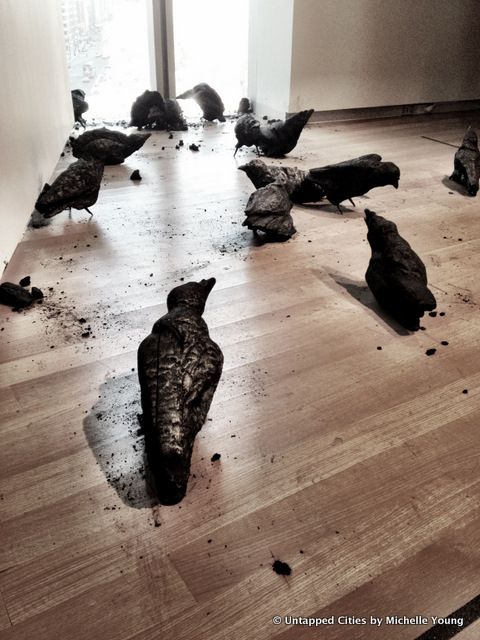 Maskull Lasserre’s “Murder,” 19 charcoal crows and ravens made of burned wood
Maskull Lasserre’s “Murder,” 19 charcoal crows and ravens made of burned wood
Equally incredible is Glasstress, another current exhibit at MAD, with work from the Venice Biennale. The Venetian Island of Murano has been a glassmaking center for over a millenium, but has become known more for its history than innovation. In an effort to produce a new manifesto for glass and art, Venetian glass artist Adrieno Berengo challenged artists from around the world to create “works that defied expectations of what Murano glass was.”
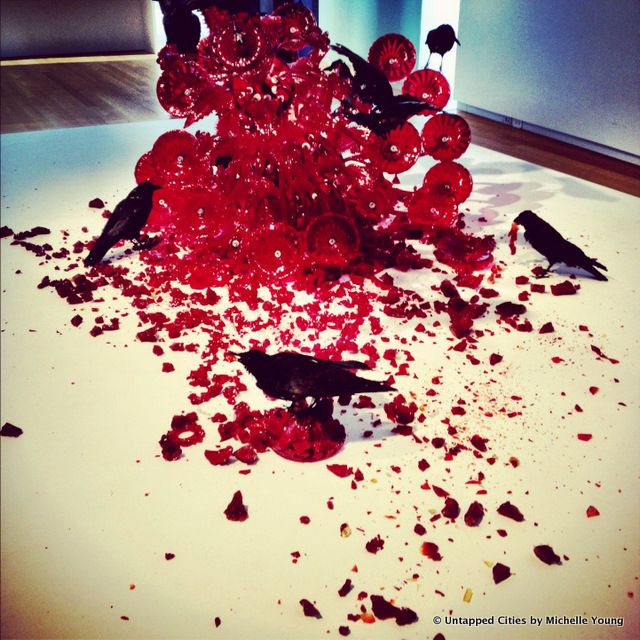 Javier Pérez’, Carroà ±a. Murano glass chandelier and stuffed crows
Javier Pérez’, Carroà ±a. Murano glass chandelier and stuffed crows
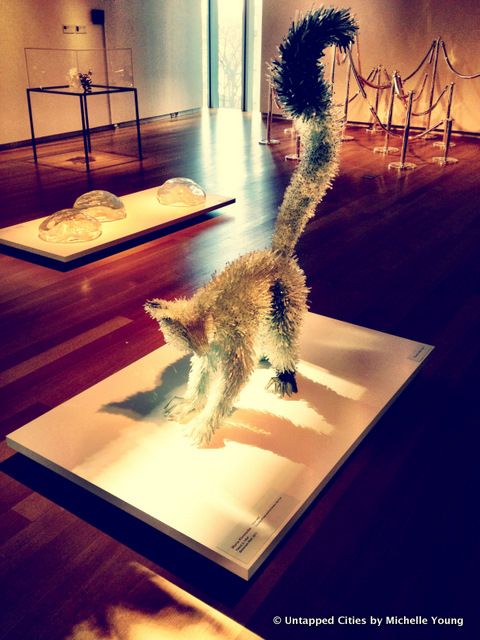
Marta Klonowska, Bestiarium: Maki, of glass and metal
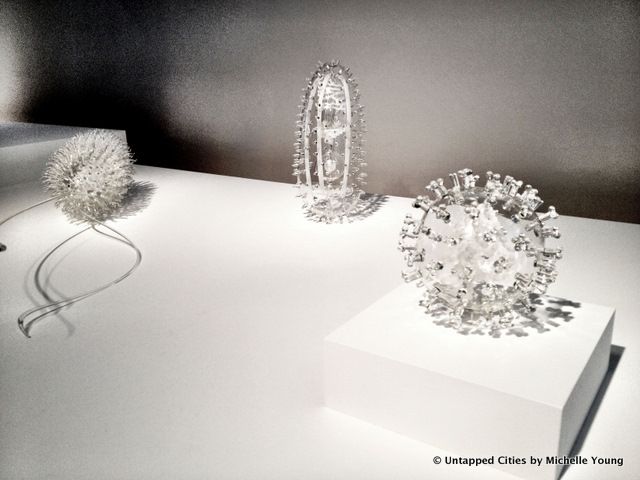
Luke Jerram’s glass incarnations of E.Coli, Large Spiky Malaria and Round Swine Flu
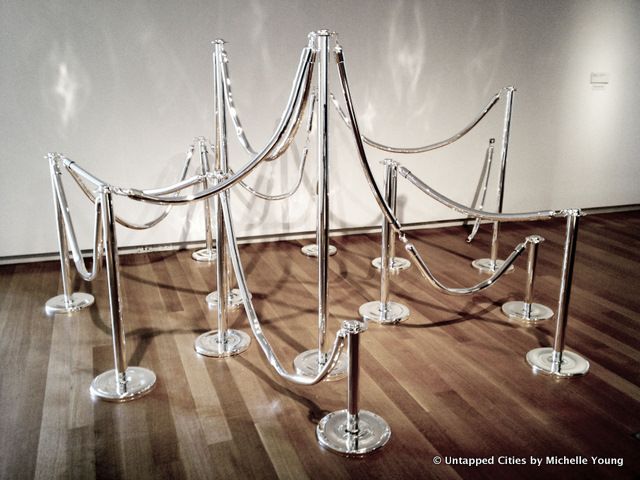 Michael Joo’s Expanded Access of Mirrored Borosilicate Glass
Michael Joo’s Expanded Access of Mirrored Borosilicate Glass
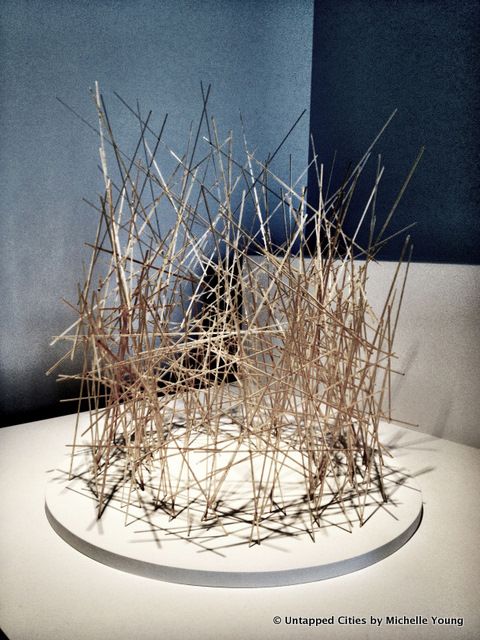
Mike + Doug Starn. Those familiar with Big Bambà º at the Metropolitan Museum rooftop will recognize the artists’ signature style, even in glass.
Also not to be missed are the exhibits Beauty in All Things: Japanese Art and Design and Hanging Around: Necklaces from the MAD collection, the latter will rock your conception of jewelry to the core. For the social media inclined, 4 check-ins on FourSquare to MAD will get you a free one year membership.
Follow Untapped Cities on Twitter and Facebook. Get in touch with the author @untappedmich.
Subscribe to our newsletter